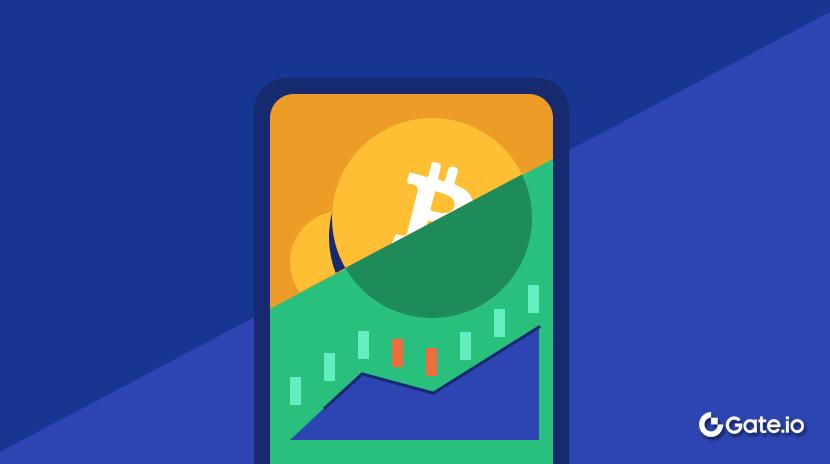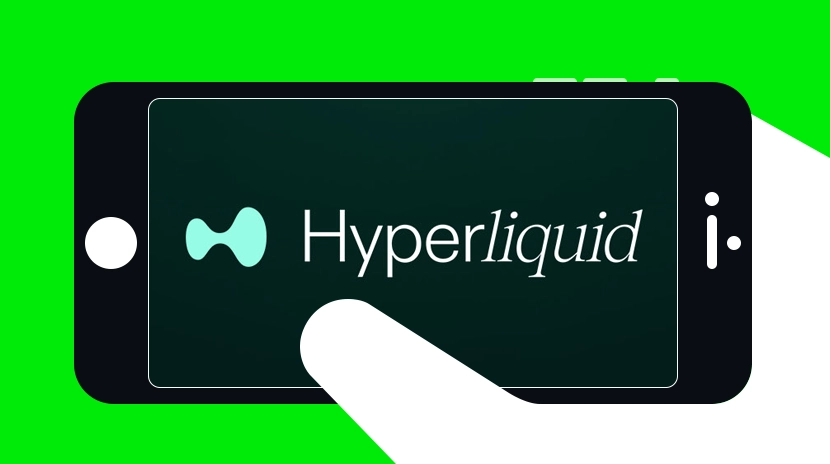Pengakuan Seorang Market Maker Frontline: Panduan Bertahan untuk Proyek di Hutan Gelap
Di hutan gelap pembuat pasar ini, memegang garis bawah adalah hal yang sulit - aktor jahat pretensius akan selalu lebih menarik daripada pemain jujur dan lurus.
Ini adalah pengakuan seorang market maker di garis depan dan panduan bertahan untuk proyek-proyek yang menavigasi hutan gelap. Saya harap ini bisa memberi Anda sedikit bantuan. :)
Izinkan saya memperkenalkan diri: Saya Max, seorang Gen Z yang sudah merasa tua. Pada awalnya, saya hanyalah seorang mahasiswa keuangan yang berjuang di Hong Kong, tetapi sejak 2021, saya telah berkecimpung di dunia kripto (terima kasih kepada industri yang telah menyelamatkan saya). Meskipun saya belum lama berada di sini, saya pertama kali masuk ke ruang ini sebagai pendiri proyek sebelum meluncurkan komunitas pengembang dan akselerator, yang membuat saya dekat dengan pengusaha tahap awal. Saat ini, saya memimpin lini bisnis pembuat pasar di@MetalphaPro. Berkat bos saya, saya mendapatkan gelar mewah Kepala Ekosistem, tetapi sebenarnya, saya menangani BD dan penjualan.
Selama setahun terakhir, saya telah terlibat dalam penjualan dan pembuat pasar untuk lebih dari satu lusin koin di @binance, @okx, @Bybit_Official, dan beberapa bursa tingkat kedua. Saya telah mendapatkan sedikit pengalaman di sepanjang jalan.
Baru-baru ini, pembuat pasar telah menjadi topik yang hangat. Saya sudah lama ingin secara sistematis memahami peran unik dalam industri ini, dan ini tampaknya merupakan kesempatan yang sempurna untuk melakukannya. Keahlian saya terbatas, jadi jika ada kesalahan, saya menghargai pengertiannya. Artikel ini hanya mencerminkan pandangan pribadi saya dan ditulis 100% oleh saya.

Melampirkan foto anjing saya untuk memulai segalanya.
Dimulai dengan 'Tanda Observasi' GPS...
Ketika saya mendengar bahwa GPS telah diberi “tag observasi” oleh @binanceSaya sedang mengobrol dengan seorang pendiri proyek yang telah berjalan selama lebih dari setahun dan berencana untuk terdaftar di Q2. Pria ini muda, tampan, dan sangat mampu, tetapi saya bisa mendengar kelelahan dalam suaranya. Proyeknya telah mengumpulkan beberapa juta, mencapai beberapa tonggak yang kuat, dan semuanya tampak berjalan lancar. Namun, bagi seorang pendiri, penggalangan dana hanyalah utang yang harus dibayar. Selama setahun terakhir, dia harus terus mengubah narasi sambil berjuang melalui pasar yang brutal—mencoba menyelesaikan putaran pendanaan baru, bernegosiasi dengan bursa kelas atas, dan khawatir bagaimana tokennya akan berperforma setelah terdaftar, terutama setelah melihat begitu banyak penawaran terakhir turun di bawah harga awal mereka. Hanya mereka yang telah menjalankan proyek sendiri yang benar-benar dapat memahami stres, ketidakpastian, dan kecemasan yang datang bersamanya.
Ketika kita sedang ngobrol, pemberitahuan dari Binance tiba-tiba muncul. Meskipun proyeknya tidak bekerja sama dengan GPS dalam market maker, kami telah berinteraksi dengan anggota tim mereka selama dua tahun terakhir, jadi berita ini terasa dekat. Saya tidak akan membahas analisis atau spekulasi terperinci—terlalu banyak berbicara bisa mengganggu. Mari kita tunggu pernyataan resmi dari Binance dan proyek tersebut. Tetapi selama dua tahun terakhir, saya telah melihat terlalu banyak proyek dan investor ritel menderita di tangan market maker. Insiden ini mendorong saya untuk akhirnya menulis artikel ini, semoga dapat membantu tim proyek dan para profesional industri. Cukup berbicara yang tidak jelas—mari kita beralih ke wawasan yang sesungguhnya.
Model Bisnis Market Maker: Hanya “Mengatur Pesanan,” Bukan Sesuatu yang Ajaib dan Misterius
Market making bukanlah konsep baru dalam kripto. Keuangan tradisional juga memiliki pembuat pasar, tetapi di TradFi, layanan ini sering disebut sebagai mekanisme Greenshoe. Nama tersebut berasal dari Green Shoe Company yang berbasis di Boston, yang pertama kali menggunakan mekanisme ini selama IPO pada tahun 1963. Meskipun mekanisme yang tepatnya berbeda, tanggung jawab intinya tetap sama: mengutip pesanan beli dan jual selama IPO untuk menjaga likuiditas dan menstabilkan harga. Namun, karena peraturan kepatuhan yang ketat, operasi Greenshoe di TradFi cukup standar, dengan sedikit ruang untuk "keuntungan" ekstra. Ini dianggap hanya fungsi meja perdagangan tambahan lainnya—sedemikian rupa sehingga tidak ada meja perdagangan besar yang repot-repot mempromosikannya sebagai layanan terpisah.
Ironisnya, dalam industri kripto, fungsi standar ini entah bagaimana telah ditinggikan menjadi status hampir mitos, dipandang sebagai kekuatan yang memanipulasi pasar. Tetapi jika market maker benar-benar hanya menyediakan likuiditas dengan mengikuti norma industri, tidak ada alasan untuk menandai mereka sebagai 'beliung' yang merusak para pedagang eceran. Lagipula, penyediaan likuiditas sebagian besar melibatkan penawaran pada kedua sisi buku pesanan. Tentu saja, industri market making kripto yang lebih luas mencakup model bisnis lain, tetapi hari ini, kita akan fokus hanya pada yang paling relevan untuk proyek-proyek: layanan market making untuk penawaran token. Ini biasanya termasuk dalam beberapa kategori utama:

Pembuat Pasar Aktif
Dehumanisasi pembuat pasar dalam industri sebagian besar berasal dari keberadaan dan operasi awal pembuat pasar aktif. Istilah ini mengacu pada entitas yang memenuhi semua khayalan pasar tentang "pembuat pasar." Biasanya, pembuat pasar aktif bekerja sama dengan tim proyek untuk secara langsung memanipulasi harga pasar, mendorongnya naik atau turun sambil menghasilkan keuntungan dari proses tersebut. Mereka mengeksploitasi investor ritel dan berbagi keuntungan dengan tim proyek. Model kerja sama mereka bervariasi luas, melibatkan pinjaman token, akses API, pendanaan berleverage, pembagian keuntungan, dan mekanisme lainnya. Beberapa pembuat pasar nakal bahkan beroperasi tanpa berkomunikasi dengan tim proyek, menggunakan dana mereka sendiri untuk mengakumulasi posisi sebelum mengambil alih sepenuhnya pergerakan harga.
Ada pembuat pasar aktif apa saja yang ada di pasar? Secara realitas, para pembuat pasar yang aktif dalam PR, mengadakan acara, dan dikenal dengan nama masing-masing semuanya adalah pembuat pasar pasif--setidaknya, mereka harus menyatakan sebagai pasif, karena masalah kepatuhan. Jika tidak, mereka tidak akan bisa melakukan pemasaran secara terbuka (meskipun beberapa pembuat pasar mungkin telah terlibat dalam kasus aktif di awal industri atau mungkin masih diam-diam melakukannya).
Sebagian besar market maker yang aktif adalah sangat rendah profil dan beroperasi tanpa nama publik karena aktivitas mereka secara inheren tidak patuh. Ketika industri menjadi lebih diatur, perusahaan-perusahaan yang sebelumnya terkenal seperti ZMQ dan Gotbit telah menjadi target FBI dan sekarang menghadapi masalah kepatuhan yang serius. Sisa market maker aktif telah menjadi lebih rahasia. Beberapa yang besar telah mengeksekusi kasus-kasus "sukses", yang membuat mereka mendapat reputasi kuat di industri. Sebagian besar transaksi mereka sekarang dilakukan melalui referensi dalam lingkaran tepercaya.
Pembuat Pasar Pasif
Pembuat pasar pasif, termasuk kami dan banyak rekan kami, termasuk dalam kategori ini. Peran utama mereka adalah menempatkan pesanan pembuat di kedua sisi buku pesanan di bursa terpusat, menyediakan likuiditas pasar. Model bisnisnya terutama terdiri dari dua jenis:
Token Pinjaman
Retainer (biaya bulanan)
Model Pinjaman Token
Saat ini ini adalah model kerja sama yang paling umum dan banyak diadopsi. Secara sederhana, proyek meminjamkan token kepada market maker untuk jangka waktu tertentu, dan sebagai imbalannya, market maker memberikan layanan pembuatan pasar.
Sebuah transaksi pinjaman token tipikal terdiri dari beberapa aspek kunci:
Jumlah Pinjaman (x%): Biasanya merupakan persentase dari pasokan total token.
Jangka Waktu Pinjaman (x bulan): Durasi pinjaman, setelah itu layanan berakhir dan penyelesaian dilakukan berdasarkan syarat opsi yang disepakati.
Struktur Opsi: Harga penyelesaian bagi market maker saat masa layanan berakhir.
KPI Likuiditas: Kedalaman buku pesanan yang diperlukan, yang mungkin melibatkan beberapa bursa dan rentang harga yang berbeda.
Bagaimana market maker menghasilkan uang dalam model ini?
Pembuat pasar menghasilkan uang dengan dua cara. Pertama, mereka mendapatkan keuntungan dari selisih penawaran-dan-penawaran saat menempatkan pesanan, meskipun ini biasanya merupakan bagian yang lebih kecil. Bagian yang lebih besar berasal dari opsi yang diberikan oleh proyek.
Siapa pun yang akrab dengan keuangan tahu bahwa sebuah opsi memiliki nilai intrinsik sejak kontrak ditandatangani. Nilai ini biasanya merupakan persentase dari nilai total token yang dipinjam. Sebagai contoh, jika seorang market maker meminjam $1 juta nilai token dan nilai awal opsi adalah 3%, itu berarti bahwa dengan ketat mengikuti strategi lindung nilai delta, mereka dapat meraih keuntungan yang relatif stabil sebesar $30.000. Dalam kondisi pasar normal (tidak termasuk kasus ekstrem seperti lonjakan harga yang cepat atau kejatuhan yang mengganggu lindung nilai delta), perkiraan pendapatan meja perdagangan dari kesepakatan ini akan menjadi $30.000 ditambah keuntungan kecil dari selisih bid-ask.
Mengejutkan, market maker mungkin tidak menghasilkan sebanyak yang orang kira. Sebenarnya, margin keuntungan ini tidak tidak masuk akal - persaingan market making sangat ketat, dan penetapan harga opsi telah menjadi semakin efisien, meninggalkan sedikit ruang untuk margin kelebihan.
Model Retainer
Ini adalah model kedua yang relatif umum, di mana proyek tidak meminjamkan token kepada market maker tetapi menyimpannya di akun perdagangan miliknya sendiri. Market maker terhubung melalui API untuk memberikan layanan pembuatan pasar. Keuntungan dari model ini adalah token tetap berada di bawah kendali proyek, dan semua aktivitas perdagangan di akun tersebut sepenuhnya transparan bagi proyek. Secara teori, proyek dapat menarik dana kapan pun, menghilangkan risiko market maker bertindak dengan jahat. Namun, model ini memerlukan proyek untuk menjaga keseimbangan baik token maupun USDT di akun untuk menempatkan pesanan bid-ask. Selain itu, proyek biasanya membayar biaya layanan bulanan kepada market maker.
Dalam pengaturan ini, market maker mengeksekusi pesanan sesuai dengan KPI likuiditas proyek dan hanya menghasilkan biaya layanan bulanan. Dana di akun tetap tidak terkait dengan market maker, dan dalam kasus likuiditas rendah atau pergerakan pasar ekstrim (seperti flash crash), penempatan pesanan dapat mengakibatkan kerugian, yang sepenuhnya ditanggung oleh proyek.
Baik model pinjaman token maupun model retainer memiliki kelebihan dan kekurangannya masing-masing. Beberapa perusahaan perdagangan mengkhususkan diri dalam satu model, sementara yang lain, seperti kami, mendukung keduanya. Proyek harus memilih berdasarkan kebutuhan dan keadaan spesifik mereka.
Kesalahpahaman Umum
- Market maker bertanggung jawab atas "mendorong harga," "manipulasi grafik," dan "insider trading."
Pembuat pasar pasif yang berkualifikasi netral dan tidak aktif berpartisipasi dalam manipulasi harga, pengelolaan kapitalisasi pasar, atau eksploitasi ritel.
- Menyediakan likuiditas berarti “perdagangan mencuci.”
Buku pesanan bursa terdiri dari dua jenis pesanan: pesanan maker dan pesanan taker. Market Maker pasif terutama menempatkan pesanan maker, sementara rasio pesanan taker mereka minimal. Tidak peduli seberapa dalam pesanan market maker ditempatkan di buku pesanan, jika tidak ada taker yang mengisinya, itu tidak secara langsung meningkatkan volume perdagangan. Namun, jika market maker melakukan perdagangan melawan dirinya sendiri, yang dikenal sebagai "self-trading," itu menimbulkan risiko regulasi. Bursa terkemuka secara ketat memantau aktivitas tersebut, dan self-trading yang berlebihan dapat mengakibatkan peringatan atau sanksi baik untuk akun market-making maupun token.
- Jadi, apakah ini berarti market maker pasif itu tidak berguna?
Mereka tidak langsung mempengaruhi harga atau volume perdagangan, jadi pada pandangan pertama, mereka mungkin terlihat tidak perlu. Namun, likuiditas yang baik adalah dasar dari segalanya. Investor kecil fokus pada tren harga, tetapi investor besar memberikan prioritas pada volume perdagangan dan kedalaman order book sebelum memasuki pasar. Perdagangan aktif dan harga yang sehat bergantung pada kekuatan produk proyek dan upaya pemasaran, namun kerjasama dengan market maker juga sangat penting. Selain itu, bursa kelas atas jarang mengizinkan proyek untuk terdaftar tanpa market maker profesional. Tanpa market maker, pasar saat diluncurkan kemungkinan akan kacau. Market maker harus mendaftar terlebih dahulu, jadi pada tahap ini, bekerja dengan market maker pasif adalah langkah yang diperlukan bagi proyek manapun yang bertujuan untuk terdaftar di bursa terkemuka.
- Jika pembuat pasar hanya menempatkan pesanan, apakah itu mudah? Bisakah proyek melakukannya sendiri?
Ya dan tidak. Jika suatu proyek memiliki tim perdagangan sendiri dan relatif besar, beberapa bursa sekunder mungkin mengizinkannya untuk menangani market making secara internal. Namun, jika tidak, atau jika sebuah tim perlu dibangun dari awal, seringkali lebih efisien biaya dan risikonya lebih rendah untuk menyewa Market Maker profesional. Tanpa keahlian dalam market making, proyek-proyek mungkin kesulitan menangani kondisi pasar ekstrem, yang berpotensi menimbulkan kerugian signifikan dari penempatan order yang tidak tepat.
Peran Market Maker: Likuiditas Awal sebagai Sumber Daya Paling Berharga
Sekarang setelah kita telah membahas model bisnis, mari kita bahas lanskap saat ini, yang mungkin membantu Anda memahami hal-hal dengan lebih baik.
Bagaimana tampilan pasar kripto tahun 2024-2025 dari sudut pandang likuiditas? Ini pandanganku:
BTC sedang mengalami reli independen, naik secara stabil dengan likuiditas yang cukup di puncak. Meskipun ada penurunan belakangan ini, dasarnya tetap kuat. Para penambang, yang biayanya berkisar antara $50k-$60k, senang, dan institusi tradisional yang terburu-buru juga senang.
Di ujung bawah, perdagangan PVP intens, dan likuiditas telah cukup memadai. Pemain di platform seperti @pumpdotfun, @gmgnai, @solana, @base, dan @BNBCHAINsedang kehilangan uang dengan antusias (Saya sendiri juga menyumbang—sial), sementara outlier dan insider menghasilkan keuntungan yang baik.
Likuiditas tingkat menengah telah mengering. Puncak yang terjadi dengan token Trump dan Libra hampir sepenuhnya menguras likuiditas dan permintaan sisi pembeli dari sektor, menggeser modal secara tidak dapat diubah dari dalam pasar ke luar. Token dengan valuasi mulai dari ratusan juta hingga miliaran kini menemukan diri mereka dalam posisi yang canggung. Daftar baru di bursa kelas atas kesulitan menarik pembeli, dan dalam dua bulan setelah daftar, volume perdagangan merosot. Kebanyakan aktivitas perdagangan dan kedalaman terjadi saat peluncuran, hanya untuk segera turun di bawah harga masuk VC. Ketika VC membuka kunci token mereka, kemungkinan besar mereka mengalami kerugian, dan ketika token tim terbuka, seringkali menjadi nol.
Dalam siklus ini, token tingkat menengah nampaknya mengalami kesulitan yang paling besar. Namun kenyataan yang keras adalah bahwa lebih dari 90% dari para profesional yang disebut sebagai "Web3 asli"—mereka yang menghasilkan gaji, menghadiri konferensi, membangun bisnis, bekerja di VC, tim proyek, akselerator, BD, pemasaran, dan pengembangan—semuanya terlibat dalam ekonomi token tingkat menengah. Jika Anda melihat penggalangan dana, pengembangan produk, pemasaran, airdrops, dan daftar pertukaran, semua kegiatan ini berkaitan dengan proyek-proyek tingkat menengah yang diluncurkan di bursa terpusat. Inilah mengapa banyak profesional industri ini belum menghasilkan banyak uang dalam siklus ini dan mengalami masa sulit.
Namun, pembuat pasar memiliki sumber daya paling langka untuk token tingkat menengah: likuiditas awal. Likuiditas saja tidak cukup—harus datang lebih awal. Harus ada di sana saat peluncuran, karena jika sebuah proyek gagal, bahkan memiliki pasokan token besar tidak berarti. Sebuah proyek mungkin memiliki 15% pasokannya beredar saat peluncuran, dengan 1-2% (atau lebih) dialokasikan untuk pembuat pasar. Likuiditas peluncuran yang tidak terkunci ini adalah sumber daya yang sangat berharga di pasar saat ini. Akibatnya, persaingan di antara pembuat pasar semakin memanas, dan banyak VC dan proyek juga membentuk tim pembuat pasar sementara mereka sendiri. Beberapa tim ini bahkan kurang memiliki kemampuan perdagangan dasar tetapi tetap memprioritaskan untuk mengakuisisi token terlebih dahulu, dengan asumsi bahwa karena sebagian besar proyek pada akhirnya nol, tidak masalah apakah mereka dapat mengelola likuiditas dengan benar.
Hutan Gelap Hukum Gresham: Pemain Jujur Tidak Dapat Bersaing dengan "Aktor Buruk"
Dalam evolusi pasar ini, market maker telah mengembangkan ekosistem unik: di satu sisi, jumlah market maker telah melonjak, dan penetapan harga telah menjadi sangat kompetitif; di sisi lain, kualitas layanan dan kompetensi profesional bervariasi secara drastis, menyebabkan masalah-masalah purna jual yang sering terjadi. Masalah paling umum termasuk penarikan likuiditas dan default dumping.
Pertama, mari kita jelaskan: market maker dapat menjual token. Bahkan, jika harga token melonjak, algoritma secara alami beralih ke arah penjualan karena aset yang dipinjam adalah token, dan penyelesaian akhir dengan proyek adalah dalam USDT (jika ini tidak jelas, lihat kembali bagian opsi pinjaman token). Namun, market maker pasif yang berkualifikasi harus mengikuti algoritmanya untuk menempatkan pesanan secara normal, daripada menjual agresif sebagai taker. Perilaku seperti itu dapat secara serius merugikan sebuah proyek.
Mengapa market maker melakukan ini? Mari kembali ke konsep opsi yang dibahas sebelumnya. Seorang market maker dengan alokasi pinjaman token mengikuti algoritmanya, dan jika pasar tetap relatif stabil, seharusnya berhasil mengekstrak nilai opsi, menghasilkan return 3%. Tetapi jika market maker percaya bahwa proyek tersebut akan mencapai nol pada tanggal penyelesaian, mereka dapat melakukan penjualan besar-besaran saat penawaran untuk meraup keuntungan 100%—33 kali lipat dari return MM normal.
Tentu saja, ini adalah contoh yang paling ekstrim dan langsung. Pada kenyataannya, operasi jauh lebih kompleks, tetapi logika dasarnya tetap sama: melakukan short terhadap token dengan menjual di harga tinggi ketika likuiditas kuat dan membeli kembali saat penyelesaian.
Strategi ini tidak hanya tidak etis dan tidak sesuai dengan peraturan tetapi juga memiliki risiko tambahan. Pertama, market maker tidak dapat mempertahankan likuiditas sesuai dengan kesepakatan KPI karena kurangnya inventaris yang sehat. Kedua, jika token bergerak ke arah yang salah, mereka bisa mengalami kerugian besar dan gagal menutupi penyelesaian.
Mengapa Perilaku Ini Terus Terjadi?
Kepatuhan industri masih dalam tahap awal. Ketika sampai pada model pinjaman token, meskipun market maker melaporkan status layanan mereka kepada tim proyek melalui laporan harian, laporan mingguan, dan dasbor, dan ada lembaga pemantauan dan alat pihak ketiga di pasar, apa yang terjadi dengan token di akun market maker tetap menjadi kotak hitam, dan pasar kekurangan langkah-langkah regulasi yang efektif. Setelah semua, satu-satunya pihak dengan bukti konkret dan visibilitas ke setiap perdagangan yang dilakukan oleh market maker adalah bursa terpusat itu sendiri. Namun, banyak market maker adalah klien tingkat tinggi (V8, V9) dari bursa terpusat, menyumbang miliaran dalam biaya dan dana ke platform-platform ini setiap tahun. Bursa juga memiliki kewajiban untuk melindungi privasi klien mereka, jadi bagaimana mungkin mereka mengungkapkan rincian perdagangan mereka kepada tim proyek untuk penyelesaian perselisihan? Ketika berbicara tentang hal ini, seseorang tidak bisa tidak kagum @heyibinancedan@cz_binanceatas ketegasan mereka. Menurut pengetahuan saya, ini adalah pertama kalinya pengungkapan lengkap detail perdagangan market maker telah dilakukan, hingga menit yang tepat, detail operasional, dan jumlah penarikan tunai. Apakah tindakan seperti itu seharusnya dilakukan masih diperdebatkan, tetapi niat aslinya tentu baik.
Kesadaran market maker di kalangan tim proyek dan seluruh industri masih perlu ditingkatkan. Yang membuat saya kaget adalah bahkan investor kelas atas, pendiri proyek yang telah mengumpulkan puluhan juta dolar, dan bahkan karyawan bursa memiliki sedikit pemahaman tentang bisnis market-making. Ini adalah salah satu alasan utama saya memutuskan untuk menulis artikel ini. Kebanyakan tim proyek sedang mengalami ini untuk pertama kalinya, sementara market maker adalah 'pemain' yang berpengalaman. Sebagai seseorang yang bekerja di garis depan, terkadang saya melihat tim proyek memilih untuk 'syarat yang lebih baik' dan bertanya pada diri sendiri: Apakah saya juga harus menyamakan syarat-syarat yang mengagumkan yang ditawarkan oleh pesaing hanya untuk menyelesaikan kesepakatan ini? Di hutan gelap market making ini, mempertahankan posisi sulit dilakukan. 'Pemain' pretensius selalu akan lebih menarik daripada profesional jujur. Hanya ketika pemahaman industri sejalan, kita dapat mencegah pelaku buruk mengusir yang baik.
Bagaimana Memilih Market Maker Anda?
Berikut adalah beberapa pertanyaan dan tips penting untuk dipertimbangkan:
- Apakah market maker aktif selalu pilihan yang buruk?
Ketika tim proyek bertanya hal ini kepada saya, saya tidak memberikan jawaban yang pasti "tidak." Jika kita mengesampingkan kepatuhan, ini adalah topik yang bisa diperdebatkan. Beberapa proyek memang telah mendapat manfaat dari kerja sama erat dengan market maker aktif, yang menghasilkan grafik yang lebih menarik, volume perdagangan yang lebih tinggi, dan lebih banyak peluang untuk menguangkan. Namun, juga banyak kasus di mana hal-hal menjadi salah. Intinya sederhana: Jika market maker benar-benar bisa mendorong harga Anda, mereka juga akan dengan kejam menjatuhkannya. Likuiditas pasar terbatas—pada akhirnya, Anda dan market maker aktif Anda berada di sisi yang berlawanan, dan uang di pasar itu entah milik Anda atau milik mereka.
- Pinjaman token atau retainer?
Model pinjaman token tetap lebih umum, tetapi retainer secara bertahap mendapatkan pangsa pasar. Pilihan ini bergantung pada preferensi dan kebutuhan tim proyek. Misalnya, proyek-proyek yang sangat mengontrol distribusi token mungkin enggan memiliki likuiditas besar dan tidak terduga yang dikontrol secara eksternal.
- Hindari mengandalkan hanya satu market maker pasif
Jangan menaruh semua telur dalam satu keranjang. Lebih baik bekerja dengan 2-4 market maker sehingga Anda dapat membandingkan syarat dan memiliki cadangan jika salah satu mati. Untuk mengamankan kesepakatan, market maker seringkali menawarkan layanan tambahan bernilai tambah, jadi memiliki beberapa mitra meningkatkan peluang Anda mendapatkan manfaat ekstra. Namun, untuk menghindari situasi 'terlalu banyak koki di dapur', berikan bursa yang berbeda kepada market maker yang berbeda—sebaliknya, memantau mereka menjadi jauh lebih sulit secara eksponensial.
- Jangan memilih market maker hanya berdasarkan investasi
Menerima investasi dari market maker adalah hal yang baik, dan memiliki landasan yang lebih panjang selalu menguntungkan. Namun, ingatlah bahwa market maker dan VC bermain permainan yang berbeda. Karena market maker mengendalikan sebagian besar likuiditas awal, mereka dapat memanipulasi harga token, lindung nilai, atau terlibat dalam strategi lain sebelum investasi yang terkunci mereka buka. Jadi jika market maker baik-baik saja berinvestasi dalam token Anda dan menerima pinjaman token, itu mungkin tidak selalu hal yang benar-benar positif untuk proyek Anda.
- Jangan memilih market maker hanya berdasarkan KPI likuiditas
KPI Likuiditas sulit diverifikasi dengan tepat dalam prakteknya. Jika market maker menjanjikan syarat-syarat menarik namun gagal memenuhi, janji-janji tersebut tidak berarti apa-apa. Sebelum meminjamkan token, Anda memegang kekuatan, tetapi setelah token berada di tangan mereka, Anda kehilangan daya ungkit. Market maker memiliki banyak cara untuk menyesatkan Anda.
- Ubah pola pikir Anda: Jadilah "pemain" sendiri
Ingat, Anda adalah klien. Sebelum menandatangani dengan market maker, bandingkan syarat-syarat secara menyeluruh, bahas metode pemantauan, dan tetapkan mekanisme untuk mencegah pelanggaran. Gunakan penawaran satu market maker untuk bernegosiasi syarat yang lebih baik dengan yang lain. Syarat-syarat harus tidak meninggalkan ruang untuk keraguan—jika ada yang tidak jelas, jangan menebak, hanya bertanya.
Sedikit Sentimen
Sebagai seorang junior di industri, saya benar-benar menghargai kesempatan untuk merasakan dan terlibat di dalamnya dengan mendalam. Saya sering merasakan kotoran dan kekacauan di industri ini, namun pada saat yang sama, saya terus-menerus merasakan vitalitas dan energinya. Saya tidak pernah menganggap diri saya sebagai salah satu orang paling cerdas—banyak rekan muda di industri ini sangat berbakat dan dengan cepat menemukan tempat mereka. Namun, banyak orang muda lainnya sebenarnya tersesat; tanpa industri Web3, sulit bagi mereka untuk menemukan jalan ke atas.
Saya beruntung memiliki atasan dengan nilai-nilai yang kuat dan tim perdagangan profesional yang menjadi tulang punggung kami. Bisnis manajemen aset stabil kami memungkinkan kami untuk menghindari bergantung pada market maker untuk menopang tim; sebaliknya, kami menggunakan market maker untuk membangun hubungan. Saya selalu mengikuti langkah saya sendiri, mendekati tim proyek dengan pola pikir untuk membuat teman. Pendekatan ini telah membawa saya melewatkan beberapa kesepakatan tetapi juga mengamankan beberapa yang sungguh membuat saya bangga. Beberapa proyek tidak berubah menjadi peluang bisnis, namun saya tetap berteman dengan tim di balik proyek tersebut.
Saya telah menulis cukup banyak, dan saya ragu untuk menerbitkan artikel ini. Di satu sisi, saya khawatir bahwa keahlian saya mungkin tidak mencukupi atau bahwa ekspresi saya mungkin tidak memadai, menyesatkan tim proyek dan pembaca. Di sisi lain, market maker selalu menjadi bagian yang agak rahasia dari industri ini, dan saya khawatir bahwa berbicara tentang topik-topik ini mungkin melanggar batas-batas tertentu atau mengganggu status quo.
Namun, saya benar-benar percaya bahwa seiring perkembangan industri dan kepatuhan secara bertahap menjadi norma, peran market maker tidak akan lagi didemonisasi melainkan akan muncul ke permukaan. Saya harap artikel ini, dengan cara yang kecil, ikut berkontribusi pada kemajuan tersebut.
Sanggahan:
- Artikel ini diambil dari [ TechFlow], dan hak cipta dimiliki oleh penulis asli [MaxxxJika Anda memiliki keberatan terhadap pencetakan ulang, silakan hubungi Gate Belajartim, dan tim akan menanganinya sesegera mungkin sesuai dengan prosedur yang relevan.
- Penafian: Pandangan dan pendapat yang terdapat dalam artikel ini hanya mewakili pandangan pribadi penulis dan tidak merupakan saran investasi apa pun.
- Versi bahasa lain dari artikel diterjemahkan oleh tim Gate Learn. Artikel yang diterjemahkan tidak boleh disalin, didistribusikan, atau diplagiat tanpa menyebutkan Gate.com.
Artikel Terkait

Bagaimana Melakukan Penelitian Anda Sendiri (DYOR)?

Analisis Teknis adalah apa?

Top 10 Platform Perdagangan Koin Meme

Apa yang Dimaksud dengan Analisis Fundamental?

Apa itu Tronscan dan Bagaimana Anda Dapat Menggunakannya pada Tahun 2025?


